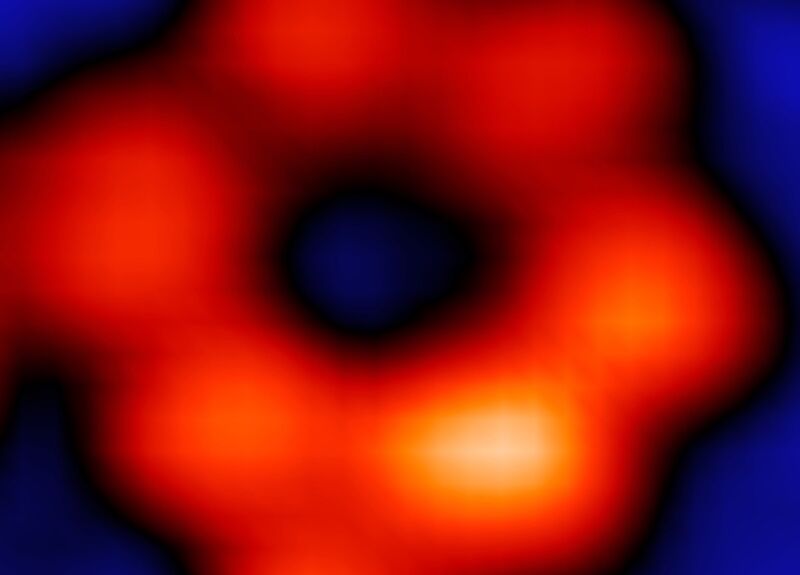This is the first X-ray taken of a single atom

Enlarge / An image of a ring-shaped supramolecule where only one Fe atom is present in the entire ring. (credit: Saw-Wai Hla)
Atomic-scale imaging emerged in the mid-1950s and has been advancing rapidly ever since-so much so, that back in 2008, physicists successfully used an electron microscope to image a single hydrogen atom. Five years later, scientists were able to peer inside a hydrogen atom using a "quantum microscope," resulting in the first direct observation of electron orbitals. And now we have the first X-ray taken of a single atom, courtesy of scientists from Ohio University, Argonne National Laboratory, and the University of Illinois-Chicago, according to a new paper published in the journal Nature.
Atoms can be routinely imaged with scanning probe microscopes, but without X-rays one cannot tell what they are made of," said co-author Saw-Wai Hla, a physicist at Ohio University and Argonne National Laboratory. "We can now detect exactly the type of a particular atom, one atom at a time, and can simultaneously measure its chemical state. Once we are able to do that, we can trace the materials down to [the] ultimate limit of just one atom. This will have a great impact on environmental and medical sciences."
When the average non-scientist thinks of an atom, chances are they envision some popularized version of the classic, much-maligned Bohr model of the atom. That's the one where electrons move about the atomic nucleus in circular orbits, like planets orbiting the Sun in our Solar System. The orbits have set discrete energies, and those energies are related to an orbit's size: The lowest energy, or ground state," is associated with the smallest orbit. Whenever an electron changes speed or direction (according to the Bohr model), it emits radiation in the specific frequencies associated with particular orbitals.